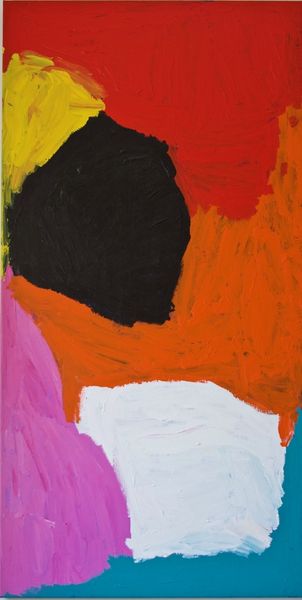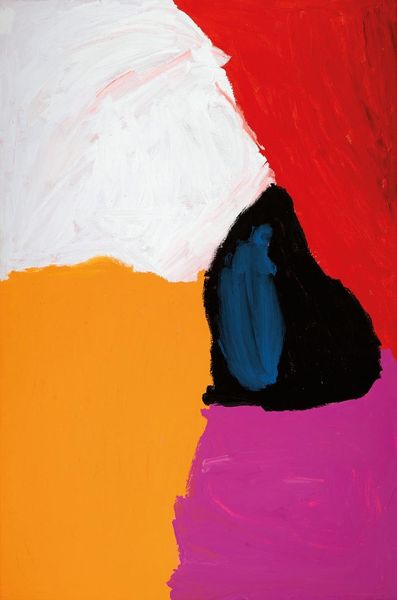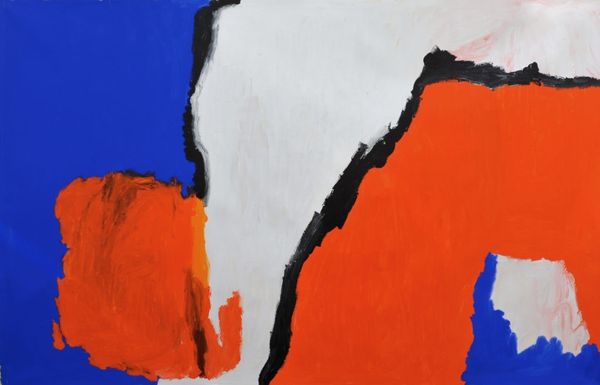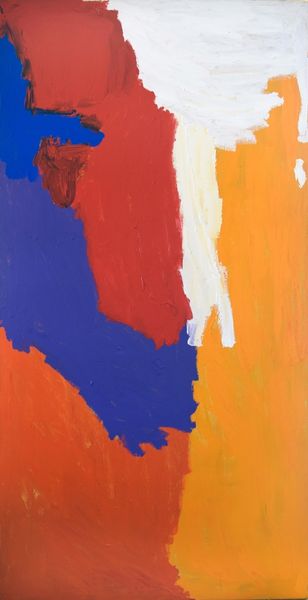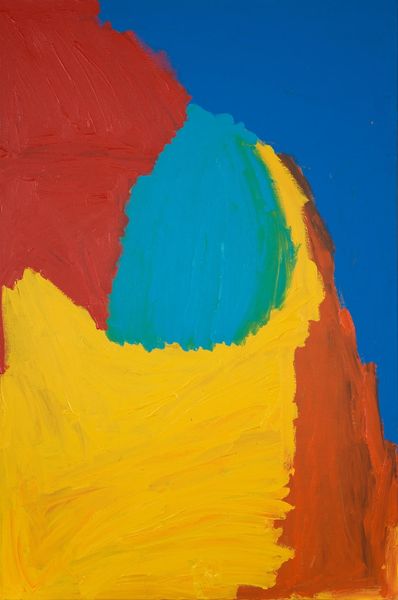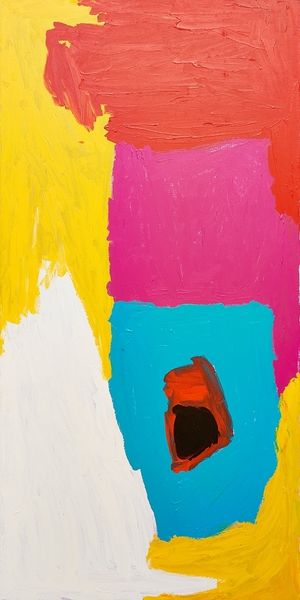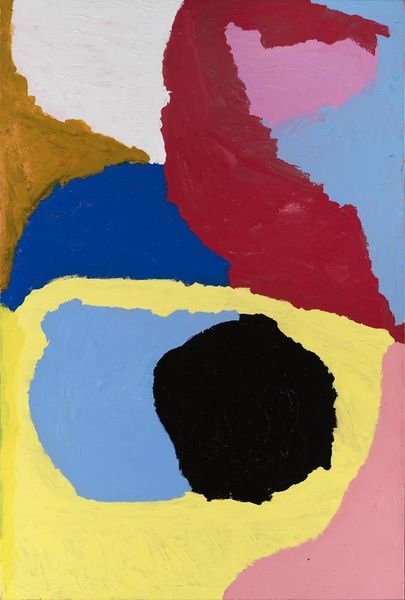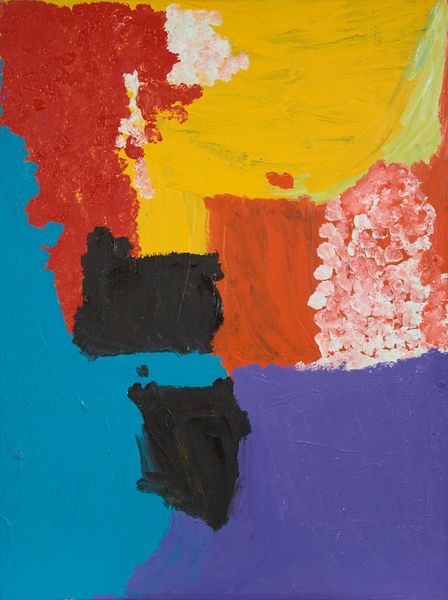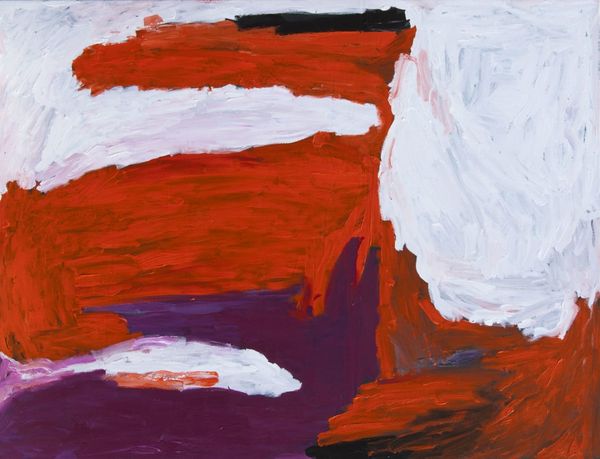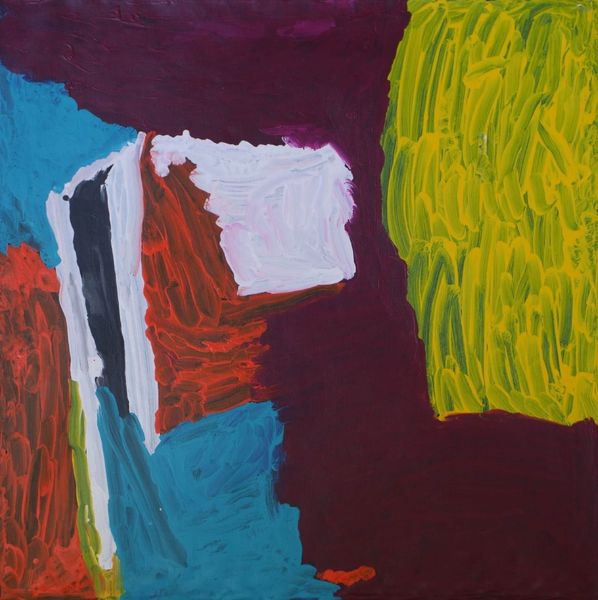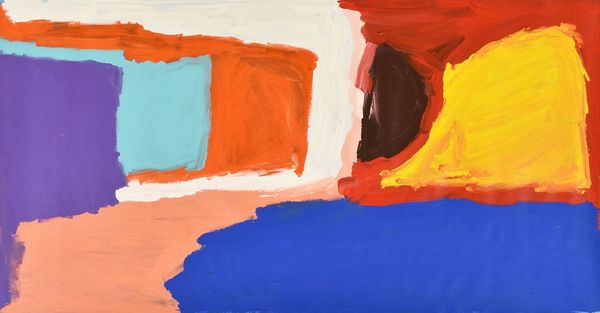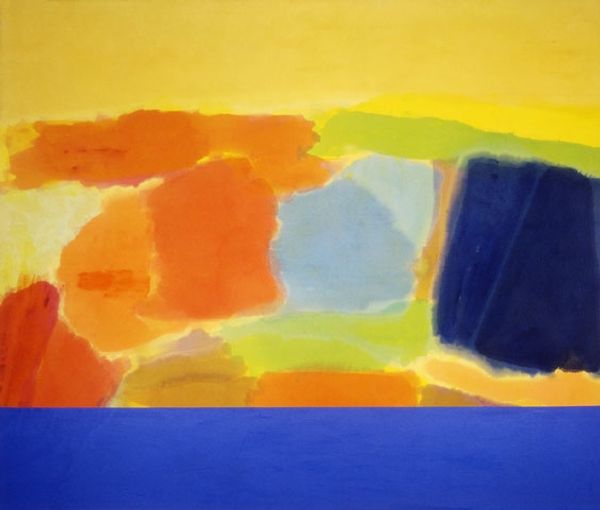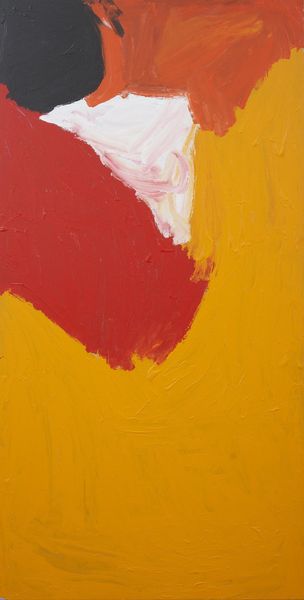
Copyright: Sally Gabori,Fair Use
Curator: Stepping up to Sally Gabori's "Dibirdibi Country" from 2009, painted with acrylic on canvas, I’m immediately struck by the bold, unmodulated color fields. The raw intensity feels remarkably direct. Editor: I agree. It feels… almost primal? A visceral arrangement of basic hues—red, black, blue, white, and yellow—evokes a strong emotional reaction, despite the apparent simplicity. There's an energy that radiates beyond just surface appeal, but rather an experience relating to memory and place. Curator: Precisely. Gabori was an Indigenous artist from Bentinck Island, and her paintings are often seen as cartographic representations of her homeland. While abstract, this work, with its strong color symbolism, speaks to specific locations and narratives. The blocky sections evoke topographical elements rendered through lived experience. The colors act almost like a code, where one color may represent the waters and the other, specific rocks or landscapes. Editor: And that connection to place is vital, isn’t it? For Gabori, painting was a reclamation, an act of cultural assertion after displacement from her home. She only began painting in her 80s, transforming decades of memories into a vibrant, contemporary language. Her identity and cultural presence exist within these paintings, and is inseparably linked to both place and dispossession. The seeming artlessness might then belie a very profound form of visual activism, countering narratives of colonial erasure. Curator: That intersection of personal memory and collective identity is key. Colors in Indigenous art have layered symbolic meanings—it's unlikely to be a one-to-one translation, as perhaps we understand it. The visceral impact of the painting arises from both her lived experience and cultural memory embedded within each bold stroke, with this very distinctive map that has been rendered visible for generations. Editor: Absolutely. Seen in this light, Gabori’s “Dibirdibi Country” transcends simple abstraction. It becomes a potent statement about belonging, resilience, and the enduring power of cultural expression as an act of defiance. It urges us to question the canon and decentre what counts as valuable expression. Curator: Looking closely, I see echoes of a place brimming with significant forms. Her painting encapsulates not just landscape, but experience. Editor: It's a profound example of how abstraction can ground us more deeply in the tangible and the political.
Comments
No comments
Be the first to comment and join the conversation on the ultimate creative platform.
